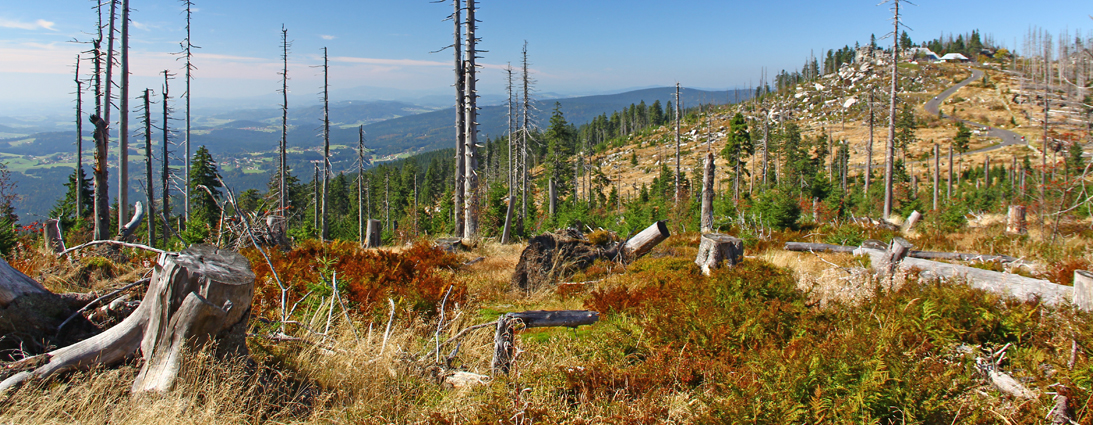


The recent destructive and tragic Camp and Woolsey fires demonstrate how dead and dying trees present a considerable hazard throughout California’s backcountry.
In the face of increasing climate change and diminishing federal funding available for forest management, how can California effectively work to ameliorate its growing wildfire danger? One solution may lie in a sustainable energy solution not often considered by governments and industry: wood biomass to energy projects.
In 2015, the California Biomass Collaborative at UC Davis published a report that examined the “Potential for Biofuel Production from Forest Woody Biomass.” It makes the case that a biofuel industry based on wood could help finance the effective clearing of “waste” material from California’s forests, minimizing the risk of dangerous fires burning out of control and widely destroying property. The report qualifies that the value of biofuels in California would need to increase to make the proposition viable.
While the report offers some concrete solutions to lawmakers interested in exploring the harvesting of woody biomass as a solution both for wildfire abatement and sustainable energy market growth, there is one very important issue the report does not fully address. Namely, is burning woody biomass a carbon neutral and sustainable energy option? In other words, can the burning of wood-based biofuels truly diminish greenhouse gas (GHG) emissions?
UK: A flawed model
During 2015-16, the United Kingdom imported 7.5 million metric tons of wood pellets for energy use, in part to meet carbon-cutting targets. This stems from the belief that burning bio-waste is preferable to burning fossil fuels because it only emits carbon that was recently taken out of the air by the plant you’re burning.
Regrettably, many lawmakers in the European Union built this assumption into their renewable portfolio and carbon neutral standards. More recent research reveals that you need to plant at least one tree for every tree you burn to operate in a truly carbon neutral way. Unfortunately, the greatest exporter of wood pellets to Europe, the United States, is not beholden to this requirement and is not planting new trees. Any carbon emission benefits that could be realized are therefore lost before a single chip is burned.
However, scientists now say the conversation is even more nuanced than “a tree for a tree.” Even if a sapling is planted to take the place of a tree that is burned, it will take years for the new tree to reach maturity and absorb the amount of carbon released out of the flames of the old. Thus, if the wood bioenergy market in Europe continues to grow without new checks, it may never reach carbon neutrality and actually result in a net increase of GHGs over time.
Does this mean there’s no merit in burning wood waste for energy to reduce GHGs? According to Middlebury College in Vermont, it depends on the approach you take.
A sustainable approach
Middlebury College has a carbon neutral mandate for its campus yet operates a wood-to-energy plant to make steam for heating, cooling, hot water and cooking. The plant employs a “biomass gasification” process that superheats woodchips in a low oxygen chamber. Exhaust from this process moves through a series of filters so that most of what comes out is water vapor. The exhaust is also used to cogenerate approximately 3-5 million kilowatt-hours of electricity per year. Overall, the biomass installation reportedly saves Middlebury College approximately $840,000 a year in fuel costs.
The college reports this process annually offsets 12,500 tons of carbon emissions because it only sources wood chips from heavily forested areas where recent forest growth has exceeded forest harvests. Still, the college is careful to clarify they are working to better understand their suppliers’ practices and the extent to which they are using ecologically sustainable forestry practices.
Potential opportunities
Hopefully, new groundbreaking projects will contribute to the efficacy of these types of installations. CSE, through its administration of the Department of Energy’s Western Combined Heat and Power Technical Advisory Partnership, is collaborating with the California Energy Commission and Camptonville Community Partnership to develop a considerably larger small-scale power generation facility. The fuel for the plant will come from sustainable forest management activities on nearby private and federal lands. Once completed, CSE will continue to help with system operations and evaluation.
If the Middlebury and Camptonville projects prove sound and scalable, it could mean big things for California. According to “Recommendations for a Bioenergy Plan for California,” released by the Energy Commission in 2006, there could be nearly 15 million tons of forest residue available annually in California for energy use and generation.
New challenges and emerging technologies are providing opportunities to undertake a multidimensional approach when addressing the ongoing challenges of climate change and energy procurement. Moving forward we should not be afraid to explore new and novel ideas when crafting solutions for these problems.
Cutting-edge projects and new research reveal it may be possible to utilize bio-waste in a careful way to create sustainable energy systems and reduce GHG emissions. That being said, there are many complicated variables to consider, and there is likely not a one-size-fits-all solution. Legislators and policymakers should be aware of these factors and take a careful and measured approach before integrating bio-waste and biofuels into our future sustainable energy systems.

